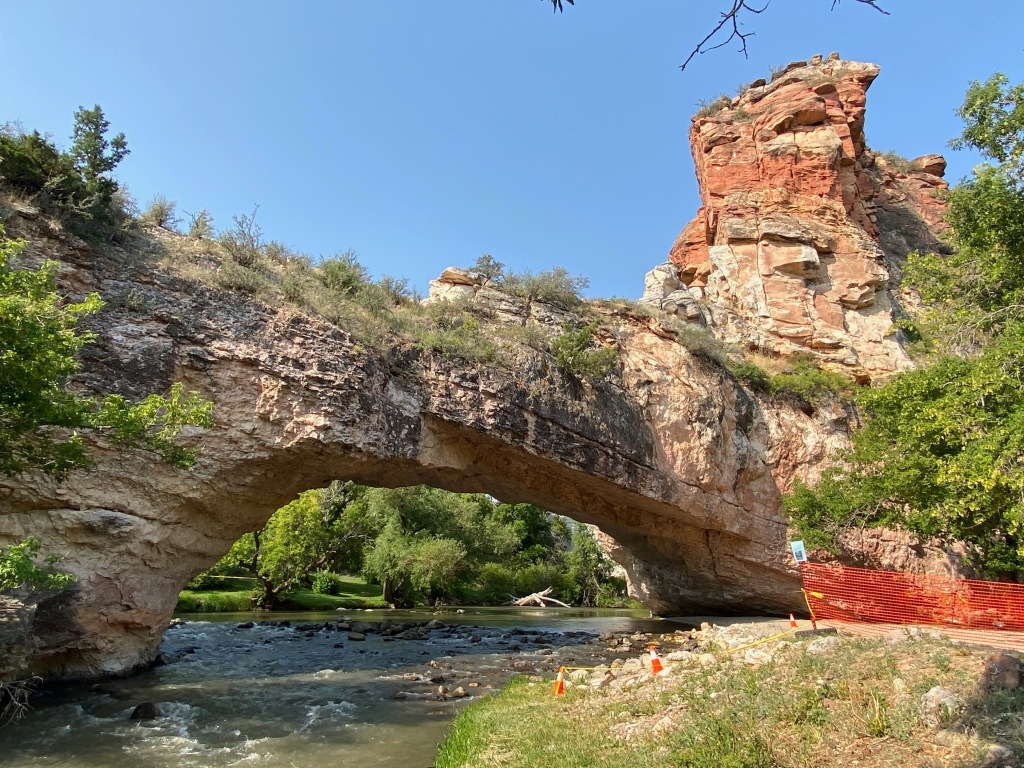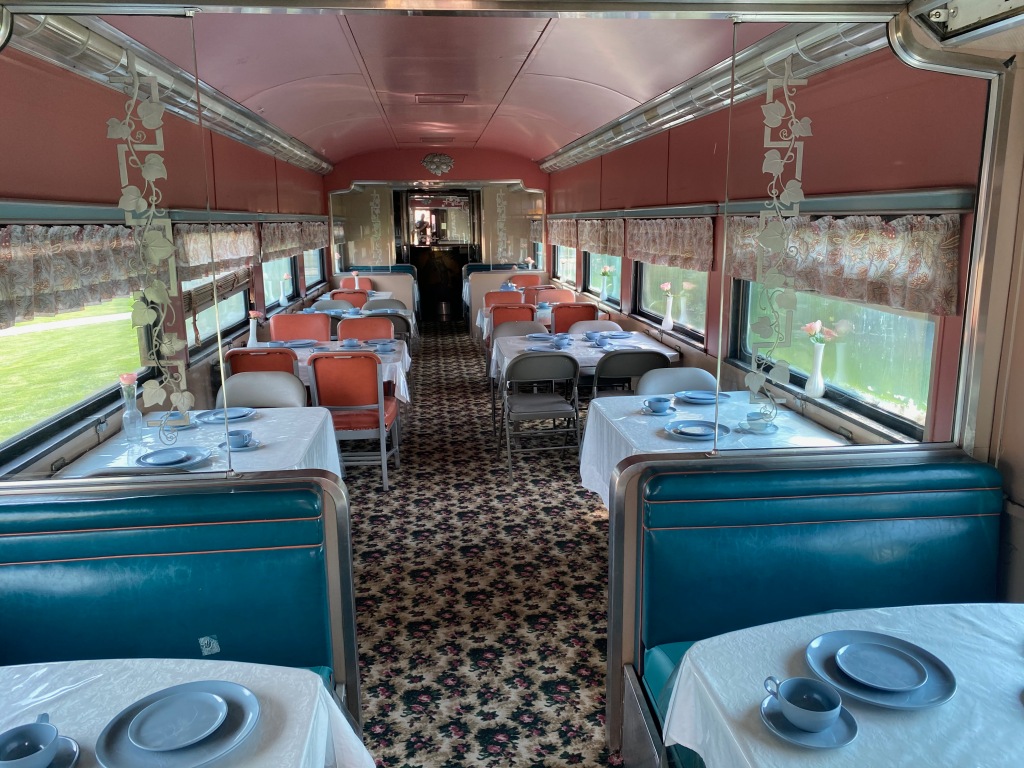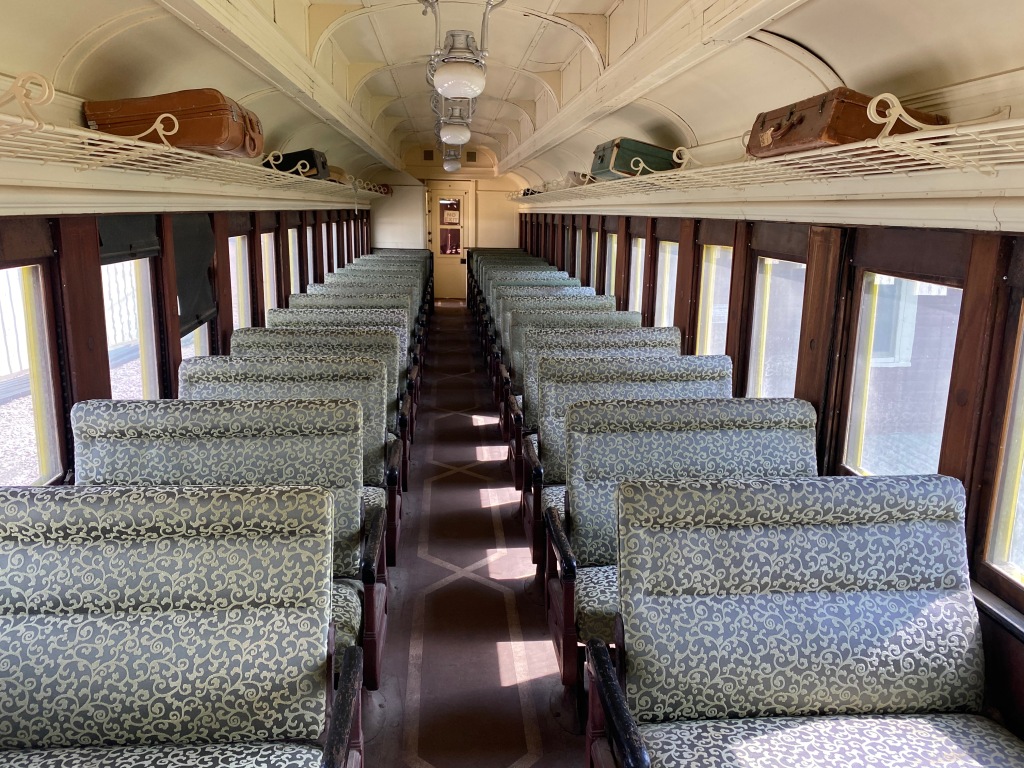DOUGLAS, WY – We spent three nights earlier this week in this southeastern Wyoming city, attending the state fair and rodeo, exploring a natural bridge, and taking in some local history about trains and World War II POWs.
Douglas is a city of about 6,000 on the banks of the North Platte River 50 miles east of Casper. It was a convenient first stop after we left Colorado Springs last Monday, and it just happened to be hosting the Wyoming State Fair and a Professional Rodeo Cowboys Association event during our stay.

Our favorite events at the rodeo Wednesday night were the saddle bronc and the bull riding. (Here’s a video clip I posted on FaceBook.) We admired the skill of the down roping and team roping competitors and the pluck of the steer wrestlers. And it was thrilling to see the young women riding their horses at full gallop in the arena for the barrel racing and the flag presentations (see above and below). I felt a bit out of place in the crowd without a cowboy hat or boots, but we felt right at home with the heartfelt opening prayer from the announcer Garrison Panzer and the national anthem from the Rock Bottom Boys. The night was pure Americana.
On our first morning in Douglas, we drove a few miles from town to see Ayres Natural Bridge. This is a beautiful spot, with the La Prele Creek flowing under the bridge and through a small canyon. It’s a county park with shaded picnic tables and benches near the creek. If you’re driving through Wyoming on I-25, it’s a refreshing spot just a few miles south of Exit 151. The bridge is supposed to be one of only three in the United States with water flowing beneath it. My fellow Virginians should know one of the others, but I’m not sure of the third. If you know what bridge that might be, feel free to post it in the comment section below.
That afternoon we toured the officers club at Camp Douglas, the only remaining building from a POW camp that housed thousands of captured Italian and then German soldiers during World War II. A striking feature of the club are the murals of Western scenes painted by three of the Italian prisoners. They are based partly on what they saw from the trains as they were transported to the camp from the docks at New York City beginning in 1943, but mostly from the Western paintings they saw by American artists. In a film and exhibits, we also heard the testimony from the prisoners about how well they were treated. One said, “I never had it so good.” Another wrote, “I never knew what it meant to be a free man until I was a prisoner in your country.”

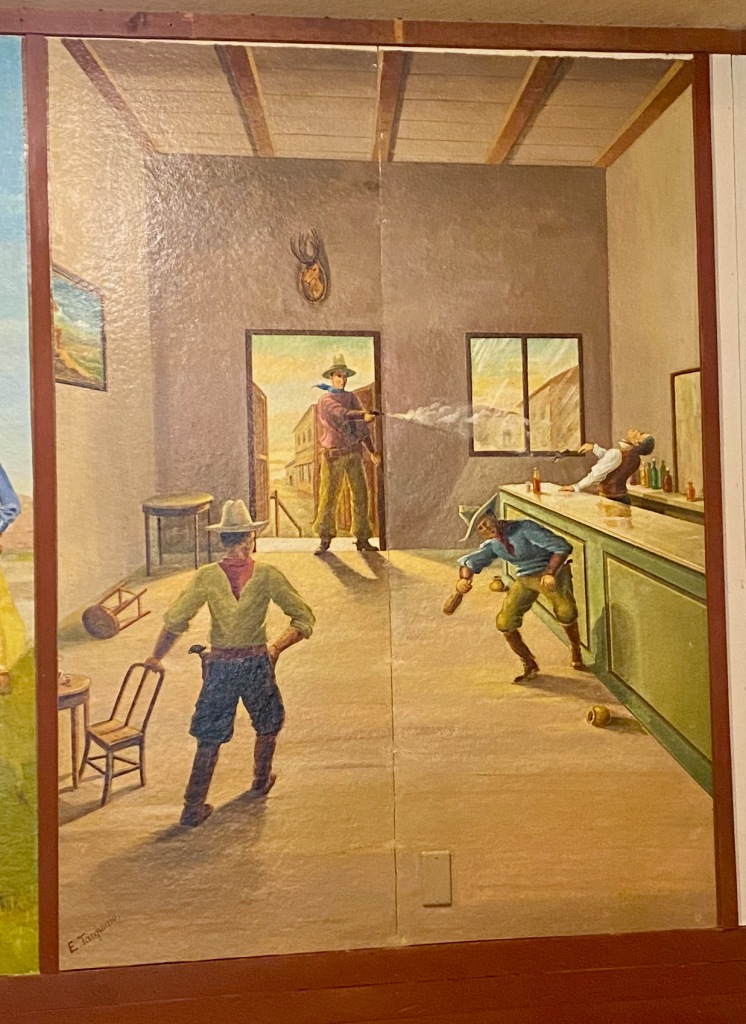

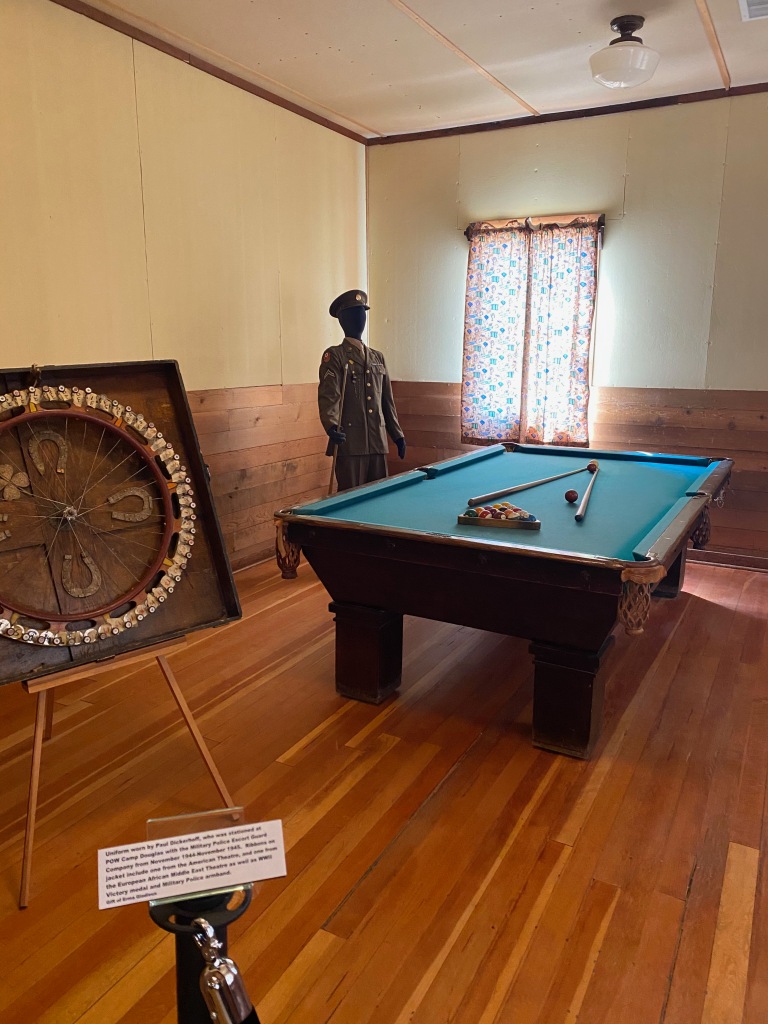
My favorite room! 
Another attraction was the Douglas Railroad Museum near downtown. If you’re into trains, this park features cars and engines from the 1880s to the 1950s. Many of them passed through Douglas during their years of service. What I especially loved is that you can walk through the cars and in some even sit on the chairs. It gave a real sense of traveling on those “magic carpets made of steel” back when it was the most economical way to travel across this vast country. (Note the giant “jackalope” outside the museum. The town has adopted the fictitious animal as a tourist attraction).
